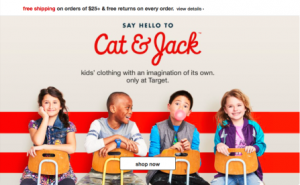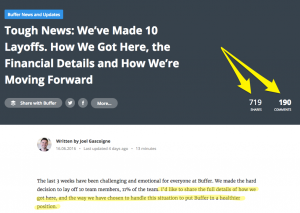Michael Greene, head of strategy at Criteo, discusses what needs to change if retail media networks are going to be successful.
Retail media networks (RMNs) are in the unique position of being both the current and next big thing in advertising.
- Current. Walmart’s RMN, Walmart Connect, is responsible for 12% of the company’s profits. One-quarter of retailers are generating more than $ 100 million in revenue from their media networks, according to Forrester. Retail profit margins tend to be slim – in the 3% to 4% range. The margin on ad sales is usually 70% to 90%, according to BCG.
- Next. Ad spending on RMNs is projected to grow by 25% per year to $ 100 billion over the next five years and will account for over 25% of total digital media spending by 2026, according to BCG. Also, 60% to 70% of that revenue will be net new spending over and above historical trade dollars.
Despite this, RMNs are still in their early stages and there are many challenges for brands and retailers to overcome. We talked to Michael Greene, head of strategy at Criteo, about the state of the RMN ecosystem and what needs to change.
Q: What do you see when you look out at the RMN landscape?
A: Two things that seem contradictory but are nonetheless true. It is the biggest trend happening in advertising right now. At the same time, it is still an incredibly immature area of the market. I mean, we have virtually any retailer that sells third-party brands participating. But, you run the gamut of everybody from Amazon — who’s been doing this for years and has built this into a foundation of their business strategy, to the companies beginning to enter the space at this point in time. The brands are immature as well. They’ve invested pretty much based on where the early entrants are, but that doesn’t necessarily match where their shoppers are looking to buy their products. So all around the ecosystem, I think we’re still early days and we’ve got a lot of maturing ahead of us.
Q: So, when you’re saying that the RMN ecosystem isn’t as mature, you mean they don’t have all the measurements brands are looking for to determine ROI?
A: Yes, I’d say those are the major buckets, but it can also be about ease of access. One of the major challenges that brands and, by extension, their agencies are facing is this: They’ve gone from having to buy across or budgeting to buy across a handful of RMNs a couple of years ago to saying, I want to buy across dozens, if not hundreds of different retailers globally. That’s a huge operational challenge. And in those cases, the brands are looking and saying, how do I get more standardization of technology, easier, self-service access, better sets of tools that let me go and execute across all the places I care about a more efficient scale?
That’s where companies like mine and the other technology players in this space come in. We’re really spending a lot of time trying to ease and simplify that access. So money can flow from brands to retailers more simply because that fragmentation is absolutely holding the market back right now. There’s no equivalent of the programmatic marketplace for all the RMNs.
Dig deeper: How a small chain is going big with a retail media network
Walmart operates, at least in the US, it’s its own ecosystem. That’s a different story in other markets. Amazon is obviously a massive walled garden, right? And then if you go into East Asia you have a very different retail environment, in terms of the traditional retailers, and also the marketplace landscape where Amazon isn’t the biggest player. In the Japanese market or the Indonesian market, they have their own technology and their own way of working. That’s very different to how even Amazon or Walmart work. The complexity is intense right now.
Q: Is it all technological challenges, like they want different, different formattings? Have we gotten to anything like standardization?
A: That’s some of it. One of the unique technical challenges about the retail media space compared to the traditional publishing space is if you’re a conventional publisher sure, you may have subscription revenue or other secondary revenue sources, but your primary source of revenue is ads. So as you think about how to build the end-user experience, the viewer experience, it’s built with ads in mind. And that’s why, in the early days of digital publishing, people were able to make the argument, “Hey, standardize your site around these core ad formats driven by the IAB because that brings you greater interoperability with how brands and agencies want.”
But retailers are trying to manage a much trickier set of conflicting goals. Because, as important as retail media is to them, their primary source of revenue is selling products. So there’s this very careful balancing act for every retailer between how do I create an ad experience that is complementary to my actual business of selling products, but at the same time is in line enough with standards and easy enough to buy that brands don’t have to go and reinvent creative every time they want to run something on my site.
And I’m not sure we’ve gotten the balance quite right yet as an industry right now. So we’re spending a ton of time thinking about how do you leave the path for retailers to create their own user experience, but also have the right amount of standardization and scalability. So brands can go buy across 100 of these different retailers without having to reinvent the wheel every single time.
Q: So what happens next?
A: I think we’re going to see a lot of progress there over the next year or two years. And retailers, I think over the past six to 12 months, they’ve been waking up and realizing what they need to do. That if they want to go beyond trade budgets, if they want to go beyond shopper budgets, if they want to truly be in the media space and go tap incremental funds, there’s a degree of standardization and scalability that’s going to need to be there. They just need to find a way to make sure that also works in concert with their primary goal of pleasing shoppers.
Q: Are there things that marketers on either side should be looking for or thinking about doing that would help?
A: It sounds so simple. But I think any retailer, if they’re entering the space should be going to the brands that they hope to work with and just asking them what is most successful, what is driving the most investment for you at other retailers and asking themselves, “Does it make sense for us to do the same thing?” I’ve had countless discussions with retailers entering the space, and we’ll talk about ad format design, what types of ad units do they want? Where do they want them placed? What type of design? And they’ll come back with, “Well, what does my site experience team want? What do I want as a monetization team? What do I want the brands to have to do?”
But they haven’t asked the brands what they like. What do they want to do? What are they buying elsewhere? What’s actually working for them? That doesn’t have to mean you go with that 100%, but you at least have it influence your decision. I don’t think that conversation is happening wide enough.
The post What brands and retailers need to know about RMNs appeared first on MarTech.
MarTech(12)







